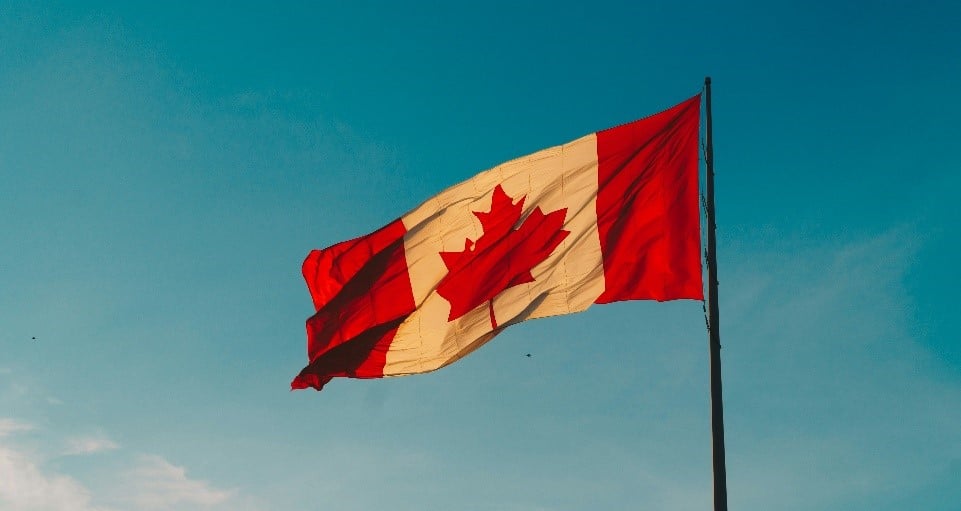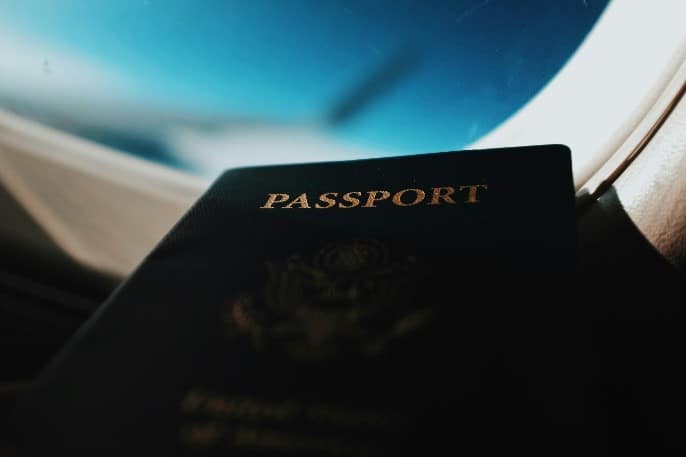US-Canadian Dual Citizenship
 24
24Oct

Imagine standing between the United States and Canada, embracing the heritage and opportunities they offer. Dual citizenship between these countries provides more than just the ability to travel and work freely; it offers a way to tap into Canada’s rich history, beautiful landscape, and heritage. The journey into US-Canadian dual citizenship can be an intriguing experience that comes with many benefits. Let’s delve into the topic of dual citizenship.
What is Dual Citizenship?
Dual citizenship means you can become a citizen of another country without giving up citizenship and loyalty to your original country. You will owe allegiance to the United States and to Canada, but do not have to choose one nationality over the other. It is important to note that not all countries allow for dual citizenship. Some countries, such as China, Japan, and Afghanistan, do not allow you to be a dual citizen. To become a citizen of those places, you must give up your American citizenship. We can embrace our freedom to have dual citizenship by exercising our right to have multiple nationalities without risking our United States citizenship.
History of Dual Citizenship
There has not always been the ability to hold dual citizenship between the United States and Canada. Dual citizenship in the United States before 1967 was nearly impossible to maintain. For example, a child born in another country to US citizens was forced to choose which country they would retain citizenship. If that child lived in another country for a long time, they were considered to have given up their United States citizenship. In 1967, the United States Supreme Court allowed dual citizenship to happen by ending most laws that prohibited it. [1] The new laws forbade the United States from removing a person’s United States citizenship without their consent. The ability to become a dual citizen was now available to Americans.
Canada has their own history of dual citizenship. Before 1947, Canadian citizenship did not exist. Instead, native-born and naturalized Canadians were British subjects. [2] The Canadian Citizenship Act of 1977 allowed for residents of Canada to obtain dual citizenship. Before this, if a Canadian citizen obtained citizenship from another country, their Canadian citizenship was removed.

How to Become a Dual Citizen
There are many ways in which a person can obtain dual US-Canadian citizenship. The first way is by birth. Canada gives citizenship to all people born there; therefore, a child born in Canada to United States citizens will automatically have Canadian citizenship. Likewise, the United States gives citizenship to babies born to United States parents in other countries. A baby born in the United States to at least one Canadian parent will likely have dual Canadian citizenship.
If you do not have Canadian citizenship by birthright, then you will need to apply for permanent residency before you can apply to become a citizen. There are many routes to becoming a permanent resident, including sponsorship, being a refugee, or through economic immigration programs. Most immigrants obtain residency through economic immigration programs. These programs were designed to improve the Canadian economy and grant permanent residency status to skilled workers or through a provincial nominee program.
- Federal Skilled Worker Program (FSW)
- The FSW program allows workers with no prior connections to Canada to obtain permanent residency, making it an appealing route to take for immigrants.
- You must have at least 12 months of continuous skilled work experience within the last 10 years.
- You must have proficient language skills in either English or French.
- You must have obtained a high school diploma (or an equivalent).
- The applicant must have the money to support themselves and their children while a resident of Canada and have the money to settle in Canada. The application does require proof of funds, and the amount required depends on the number of people in your family who are settling in Canada. For example, a family of four will need to have at least $6,824 (Canadian money) that they can show to prove they have the funds to settle.[3]
- This program applies to anyone intending to reside outside of Quebec. Quebec has its own program called the Quebec Experience Program.
- Provincial Nominee Programs (PNP)
- Each province runs its own Provincial Nominee Program, and the requirements for each province can vary slightly.
- This is a nominee program, which means that a successful PNP applicant will be nominated by the applicable province to the Canadian government to apply for permanent residency.
- In general, the provincial program is looking for students, businesspeople, skilled workers, or semi-skilled workers to apply.
You can start your application for the FSW or PNP online through the Express Entry process. The application has fees, including $1,525 for an individual, $1,525 for your spouse, and $260 for each dependent child. The processing time varies depending on what program you are applying under. For example, the current processing time for an application for a new permanent residency card is 42 days.
Once you have obtained permanent residency and have resided in Canada for at least 3 years, you have now met the residency requirement for applying for citizenship. The citizenship application will also come with additional requirements:
- You must file taxes in Canada for at least three years while you are a permanent resident.
- The applicant must pass the citizenship test. This applies to applicants aged between 18 and 54 and demonstrates that they know about their rights and responsibilities as Canadians. The test has 20 questions on Canadian history, geography, economics, laws, government, and symbols.
- You must have the ability to understand the English or French language.
- You may have to go through an interview.
- The cost for processing a citizenship application is $530 for an adult and $100 per child, plus $100 per adult for a right-of-citizenship fee.
- Currently, the processing time for a citizenship certificate is 3 months.
- Once you have applied, met all the requirements, and passed all tests, you will be granted citizenship through a ceremony.
In most cases, you can apply for Canadian citizenship online. However, you must apply on paper if you are a representative applying on behalf of a client, if you spent time outside of Canada as a crown servant, or if you are a family member of a crown servant. You may want to consult an immigration lawyer if you do not understand something about the application process.
Once a United States citizen has followed all the requirements to become a citizen, they are now a dual citizen of Canada!
Benefits
Some benefits draw people to the idea of dual citizenship, including:
- You can live and work freely between the United States and Canada. A non-citizen of one country cannot work or live in another country with just a passport.
- You can travel between the United States and Canada more easily.
- You will be able to vote in elections in both countries.
- You will be able to own property in both countries.
- If you have Canadian ancestry, becoming a dual citizen can be a way to celebrate your heritage.
Challenges
Becoming a dual citizen can have some drawbacks. Before deciding whether to become a dual citizen, you should factor in some of these reasons.
- You will need to follow the laws of both countries, including their tax laws. For example, a dual US-Canadian citizen living and working in Canada is still required to file taxes in the United States. Depending on your income, you may be required to pay taxes in the United States, even as a resident of Canada.
- The application process can become long and costly (as a reminder, the wait time for a permanent resident card is 45 days, and 3 months for a citizenship certificate). You must have the funds to settle in Canada and pay all the application fees.
- You may need to hire an immigration lawyer to navigate the process of obtaining residency and citizenship or if your case is difficult or unique.

Conclusion
Embracing the love of Canada as a United States citizen through the process of dual citizenship offers a beautiful and unique experience. With your new citizenship status, take the time to enjoy the beauty and culture of Canada. Canada is home to 48 national parks, which cover more than 340,000 square kilometers, and is a place where cultures mix and intertwine.
Price Genealogy has several expert genealogists who specialize in Canadian research. We would love to help you tear down your brick walls!
By Tyler
Sources
[1] https://www.legallanguage.com/legal-articles/dual-citizenship-united-states/
[2] https://publications.gc.ca/Collection-R/LoPBdP/BP/bp445-e.htm
Resources
https://travel.gc.ca/travelling/documents/dual-citizenship
https://www.expatustax.com/us-canada-dual-citizenship/
https://www.legallanguage.com/legal-articles/dual-citizenship-united-states/
https://citapply-citdemande.apps.cic.gc.ca/en/landing
https://www.canadim.com/immigrate/canada-permanent-residence/
Photo Attributions
[1] Photo by Hermes Rivera on Unsplash
[2] Photo by Blake Guidry on Unsplash
[3] Photo by Guillaume Jaillet on Unsplash
